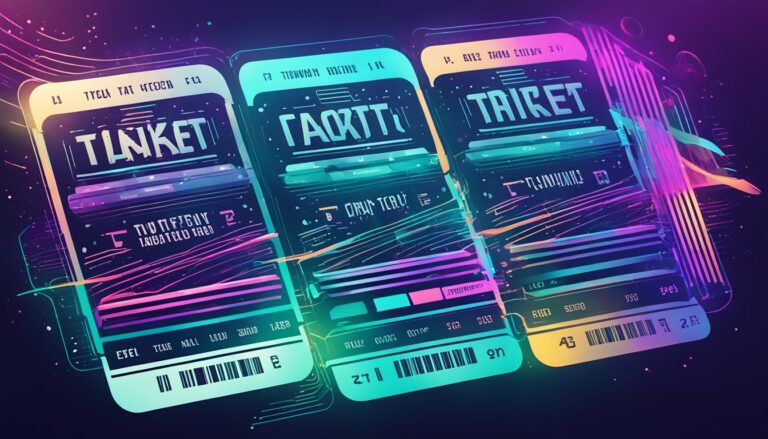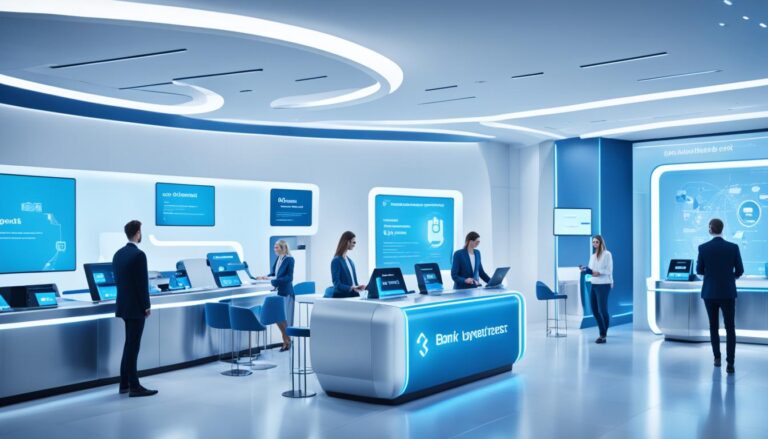Welcome to our exclusive coverage on the Medusa artificial intelligence system. It’s designed for advanced data analysis. In our world full of data, businesses need strong ways to understand and use this info. The Medusa AI system brings new power to this field with its smart algorithms and technologies.
Medusa combines modern machine learning with advanced data processing. This mix gives businesses amazing analytical abilities. With the help of Medusa, companies can look into complex data, find hidden patterns, and see future trends. This lets them make smart choices and stay ahead in their fields.
No matter if you work in healthcare, finance, or another sector full of data, Medusa can help. It uses artificial intelligence to better businesses. Medusa enables companies to improve their workings, make their processes smoother, and find new opportunities with great precision and efficiency.
Medusa is changing how businesses use data. It removes the need for long hours of manual data sorting or old-fashioned analysis methods. Medusa elevates data analysis, offering a strong tool for insights that lead to real results.
We will share more about Medusa’s technical side, its distribution, encryption, and anti-detection techniques soon. Learn how this groundbreaking AI is transforming advanced data analysis. See how you can use Medusa to fully use your data’s potential.
Technical Analysis of MEDUSA Ransomware
MEDUSA ransomware is a big threat in cybersecurity. It uses advanced tricks and targets specific victims. Let’s look at how MEDUSA works, including its encryption method and how it communicates.
Encryption Algorithm: Advanced Data Locking
MEDUSA uses a tough encryption method to keep victims’ data secret. It mainly uses AES-256, a strong and trusted encryption way. This method locks victims’ data, making it impossible to get without the right key.
The AES-256 encryption method guarantees top security. It uses a 256-bit key, making decryption really hard without the key. Finance, healthcare, and government sectors use this to protect their important data.
Command and Control (C&C) Communication: Coordinating the Attack
MEDUSA’s command and control (C&C) servers help it communicate. These servers link the attacker with infected computers. Through C&C, the attacker sends orders to infected systems and checks on them or sends out stolen data.
This communication lets the attacker control the ransomware from afar. They can start encryption or give payment details. It lets the attacker stay connected and monitor compromised systems.
The C&C communication is key to MEDUSA’s operations. Stopping or blocking this communication helps fight MEDUSA and limits the attacker’s control.
To better understand MEDUSA ransomware, let’s look at this table:
| Technical Aspect | Description |
|---|---|
| Encryption Algorithm | AES-256 |
| Command and Control (C&C) Communication | Facilitates communication between the attacker and infected systems |
Knowing about MEDUSA’s encryption and C&C helps cybersecurity experts fight this cyber threat better.
Method of Distribution and Infection Mechanism of MEDUSA Ransomware
MEDUSA ransomware spreads mainly through tricky phishing emails. These emails look real, mimicking well-known firms or people. They trick folks into clicking links or opening attachments. Once someone clicks or opens these, the ransomware starts to infect the system.
Phishing emails are a top way to distribute MEDUSA ransomware because they’re widespread and effective. They might look like urgent messages or official notices, using fear or curiosity. This tricks people into acting, making the ransomware spread easier.
In some instances, MEDUSA spread through unsafe websites. Here, hackers sneak the ransomware into a site’s code. People visiting these sites risk getting their systems infected. This method targets even more potential victims.
The MEDUSA ransomware might hide in email attachments, like bad documents or zip files. Opening these attachments launches the ransomware, starting to encrypt files. Or, it might download from a web server the email points to. This lets hackers control when and how the ransomware attacks, dodging security.
After infecting a system, MEDUSA takes steps to stick around and keep control. It changes system settings or sets up tasks. This ensures it runs at start-up or regularly. This makes it tough for victims to get rid of the ransomware or get their files back.
Examples of MEDUSA Ransomware Distribution Techniques:
- Spoofed emails pretending to be from trusted places, making recipients open attachments or click links.
- Phishing emails that look like urgent notices, making victims act fast.
- Unsafe websites where ransomware has been added, infecting those who visit.
The table below shows how MEDUSA ransomware gets distributed and how it infects:
| Distribution Method | Infection Mechanism |
|---|---|
| Phishing emails | Email attachments or remote payload downloads |
| Compromised websites | Ransomware payload injection |
The figure below shows how MEDUSA ransomware is spread and how it infects:
Encryption Process and Command and Control Communication of MEDUSA Ransomware
MEDUSA ransomware uses a complex encryption process. It also communicates with command and control (C&C) servers for its evil deeds.
Encryption Process
When MEDUSA hits a computer, it looks for files to lock up. It uses two kinds of encryption: symmetric (AES) and asymmetric (RSA). AES encrypts files quickly. RSA encrypts a special key for each file, making it very hard to break.
This method keeps the data locked unless a ransom is paid. MEDUSA’s mix of AES and RSA encryption protects data well. So, recovering encrypted files without the key is very tough for people or groups.
Command and Control Communication
MEDUSA connects to its C&C servers to share important system info and encryption keys. This way, the criminals controlling MEDUSA can stay in charge. They gather data for ransom talks.
MEDUSA’s C&C chat lets crooks send orders and get encryption keys. This makes the ransomware operate smoothly.
Through this chat, the attackers can steal secret data, raising the threat and their bargaining power. By taking valuable info, MEDUSA’s makers can not just lock data but also threaten to release or sell it if their demands aren’t met.
Understanding MEDUSA’s encryption and C&C talk is key for cybersecurity pros. They need this info to defend their workplaces from these growing dangers.
Example Table:
| Encryption Process | Command and Control Communication |
|---|---|
| MEDUSA uses symmetric (AES) and asymmetric (RSA) encryption algorithms. | MEDUSA establishes communication channels with C&C servers to send system information and encryption keys. |
| Unique encryption keys are generated for each encrypted file. | Cybercriminals receive commands and transmit encryption keys through the C&C communication. |
| The encryption process ensures high data protection. | C&C communication allows for exfiltration of sensitive data. |
Evasion and Anti-Detection Techniques of MEDUSA Ransomware
MEDUSA ransomware hides itself using advanced methods. It stays hidden from antivirus programs and security experts. This makes it hard to find and stop the threat it poses.
Code Obfuscation Techniques
The main trick MEDUSA uses is code obfuscation. It makes its code hard to read and understand. This stops security experts from figuring out what it does. The ransomware changes its code structure and uses misleading snippets to confuse analysis.
Besides, MEDUSA uses packers and tools to make its code even harder to read. These tools either compress or encrypt the ransomware’s code. It becomes a complex puzzle, making it tough for experts to analyze.
Anti-Analysis Features
MEDUSA has features that help it avoid detection by security tools. It can identify methods usually used to study malware. This helps it stay hidden.
It can tell if it’s running on a virtual machine (VM) by checking the system. If it finds itself in a VM, it might stop acting or stay hidden. This prevents further study.
MEDUSA also dodges dynamic analysis. It can spot analysis tools and then change how it works to stay undetected. This lets it avoid being analyzed and continue its harmful actions.
It also avoids emulation environments used by researchers. By staying away from these, MEDUSA evades attempts to study it. This makes understanding its actions and goals much harder.
The way MEDUSA evades detection shows we need better security. Simple detection methods don’t work on it. Cybersecurity experts must improve their tactics to fight this evolving threat.
Ransom Note and Payment Process of MEDUSA Ransomware
After finishing the encryption, MEDUSA ransomware leaves a note. This note tells victims how to pay. Usually, it asks for payment in cryptocurrencies like Bitcoin. This keeps the transactions hidden.
The notes from MEDUSA ransomware are detailed and sophisticated. They communicate with victims clearly. The notes provide clear steps on payment and how to unlock files.
The note is both a warning and a help guide. It tells the victim how to pay and what happens if they don’t. It uses unique identifiers and gives strict deadlines. This creates urgent pressure to act fast.
Some MEDUSA variants use dark web portals for payment. This makes it harder to trace payments. So, law enforcement and cybersecurity experts struggle to track the money.
Sample Ransom Note:
Attention!
Your files are now locked by MEDUSA ransomware. Trying to unlock or remove the ransomware risks permanent loss. You need a special key to access them.
To get your files back, send Bitcoin 0.1 to this address within 72 hours:
1ABCDEF2GHIJKLMNO3PQRSTUVWXYZ4567890
After paying, email us at [email protected] with your ID and the Bitcoin transaction ID. We will then send the decryption key.
If you don’t follow these steps, you’ll lose your files forever. If you delay, the price may go up.
| Ransom Note Components | Description |
|---|---|
| Attention | A header that captures the victim’s attention |
| Explanation | Information revealing that the victim’s files have been encrypted and will remain inaccessible without the unique encryption key |
| Payment demand | Clear instructions specifying the required payment amount and the designated cryptocurrency |
| Payment deadline | A specific timeframe provided for the victim to make the payment |
| Payment details | Payment wallet address or instructions on how to access the dark web payment portal |
| Contact information | Encrypted email address or other means of communication |
| Consequences of non-compliance | A warning that failure to comply with the instructions will result in permanent file loss or increased ransom amount |
Conclusion – Future of MEDUSA Ransomware
The MEDUSA ransomware is a complex threat becoming harder to tackle. It is likely that MEDUSA will improve its methods to avoid detection. This makes it a bigger danger to companies.
To fight back, companies need to be always alert. It’s essential to have strong security to protect important data. Key steps include updating systems, securing emails, and teaching staff about phishing scams.
Also, businesses should be forward-thinking and invest in advanced security solutions. Using AI for threat detection can spot ransomware signs early on. These tools learn from data to quickly stop threats.
Looking ahead, companies must work together and use expert advice to face MEDUSA ransomware. Sharing knowledge in the cybersecurity field helps everyone react faster. This collaboration is vital for coming up with effective ways to fight this evolving threat.
FAQ
What is MEDUSA Ransomware?
MEDUSA Ransomware locks up your data using tough encryption. It gets its name from a Greek myth and is a big cyber threat.
How does MEDUSA Ransomware spread?
It mostly comes via phishing emails with bad attachments or links. It might also spread through hacked websites.
What encryption algorithm does MEDUSA Ransomware use?
It uses a strong encryption method, often AES-256. This locks your data, making it hard to access without the key.
How does MEDUSA Ransomware communicate with its command and control server?
MEDUSA talks to its control servers for orders and to send data. This lets it get encryption keys and send your system info to the hacker.
How does MEDUSA Ransomware evade detection?
It hides its code and tricks analysis tools. This means it’s tough for antivirus programs and experts to catch and study it.
What is the payment process for MEDUSA ransomware?
Once it locks your files, it leaves a ransom note. The note asks for payment in digital currency, like Bitcoin. Some ask you to pay on the dark web for privacy.
How should organizations protect themselves against MEDUSA Ransomware?
To stay safe, keep watch and update security often. Use good email security, keep software up-to-date, and teach staff about online dangers and safe web use.
Is MEDUSA Ransomware expected to evolve in the future?
Yes, it will likely get trickier, with better hiding and targeting tech. Organisations need to keep up with security trends to fight these new threats.


















